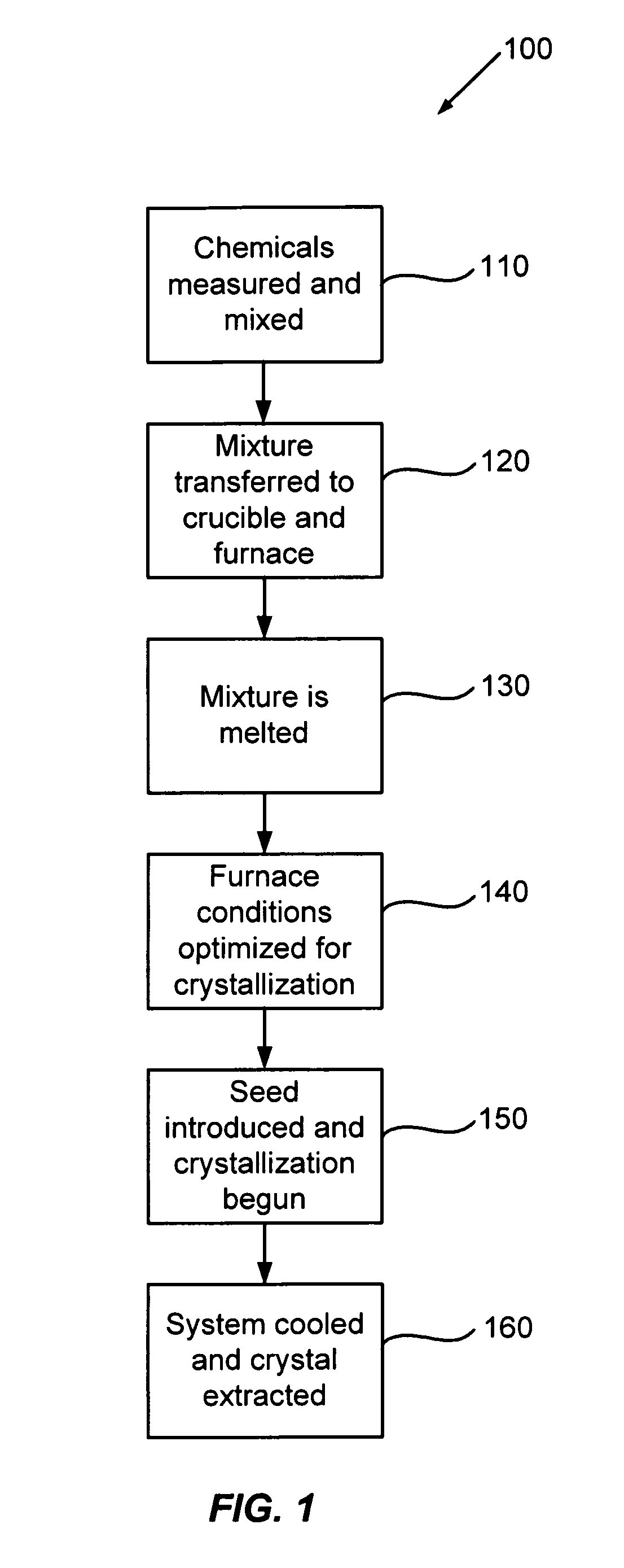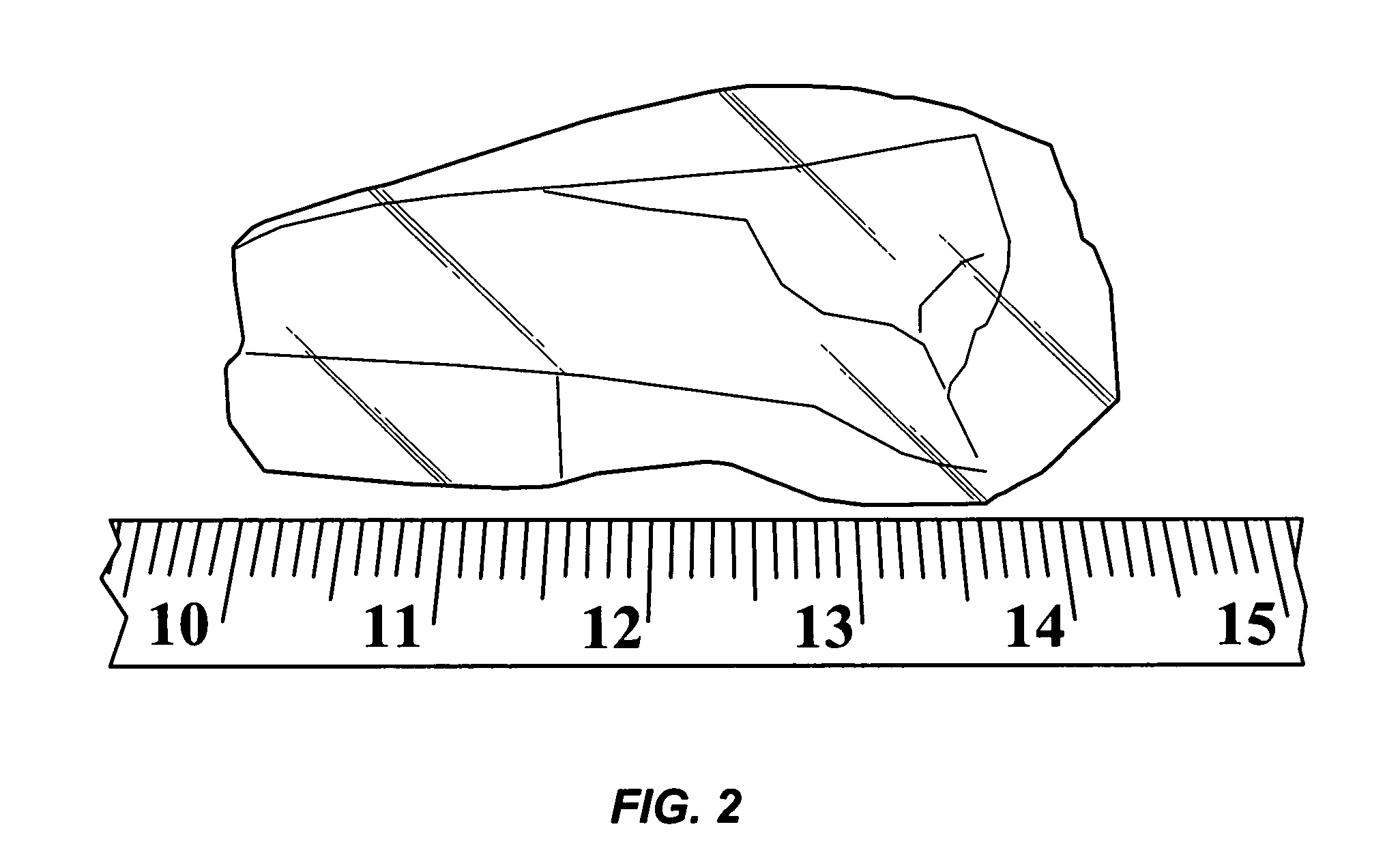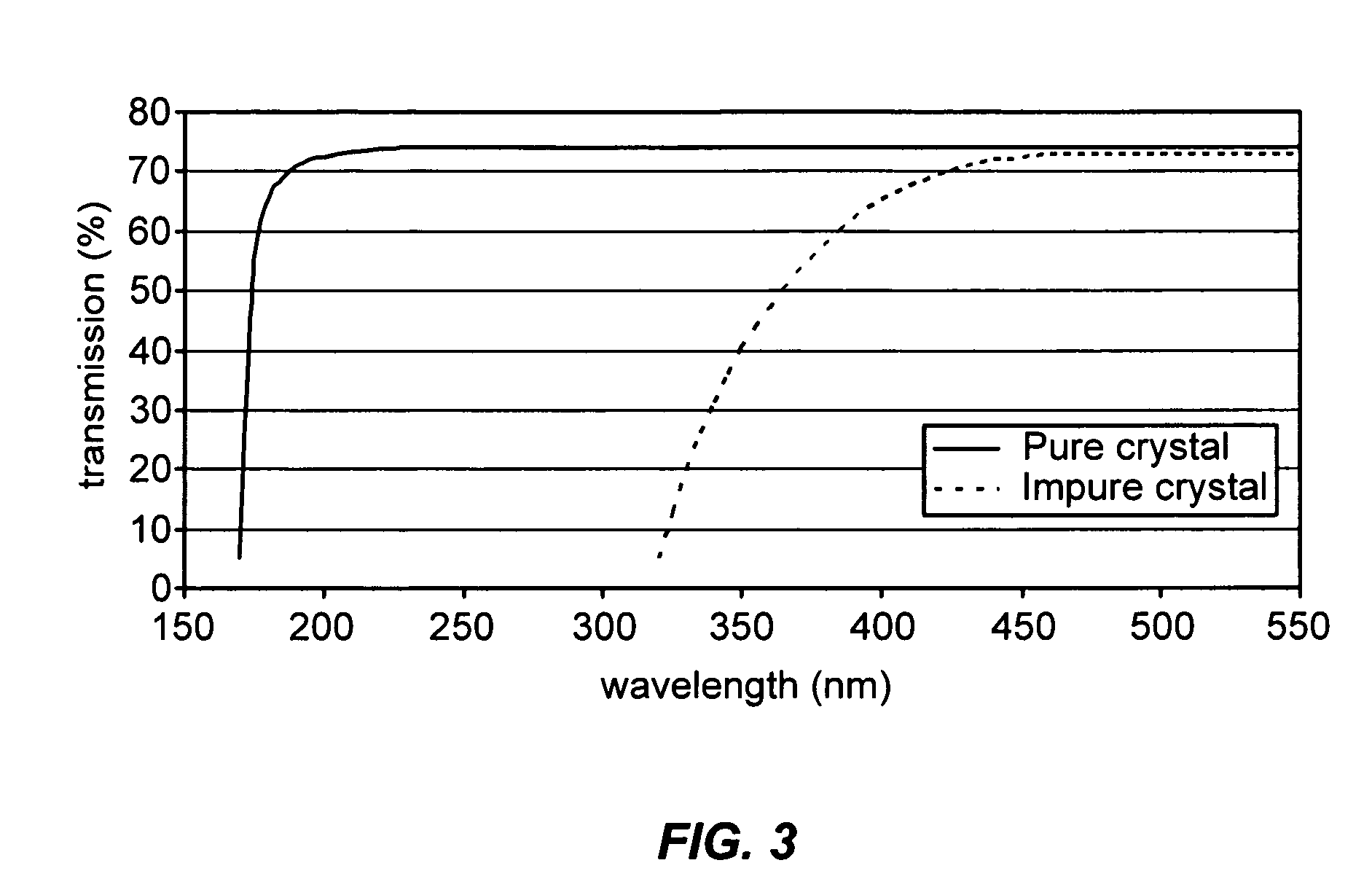Method and structure for nonlinear optics
a nonlinear optics and optics technology, applied in the direction of glass tempering apparatus, crystal growth process, chemical/physical processes, etc., can solve the problem of limiting the conversion efficiency and laser beam quality, limiting the intrinsic birefringence of phase-matching to generate deep uv radiation, and hygroscopic crystals. the effect of reducing the volatility of the starting mixtur
- Summary
- Abstract
- Description
- Claims
- Application Information
AI Technical Summary
Benefits of technology
Problems solved by technology
Method used
Image
Examples
Embodiment Construction
[0042]According to the present invention, techniques related generally to certain compounds having optical properties are provided. More particularly, as an example, an embodiment of the invention provides a specific compound comprising RiLajAlkB16O48, where 2.0≦i≦3.6, 0.4≦j≦2.0, i and j sum to about four, k is about 12, and R is selected from an elemental group consisting of Y and Lu, for use with ultraviolet, visible, and infrared electromagnetic radiation. More specifically, another embodiment provides a compound comprising YiLajAlkB16O48, where 2.8≦i≦3.2, 0.8≦j≦1.2, i and j sum to about four, and k is about 12, for use with ultraviolet, visible, and infrared electromagnetic radiation. Merely by way of example, the compound is useful for electromagnetic radiation having wavelengths of 175-360 nm, but it would be recognized that the invention has a much broader range of applicability.
[0043]According to certain embodiments of the present invention, several kinds of borate crystals ...
PUM
| Property | Measurement | Unit |
|---|---|---|
| volume | aaaaa | aaaaa |
| wavelengths | aaaaa | aaaaa |
| absorption edge | aaaaa | aaaaa |
Abstract
Description
Claims
Application Information
 Login to View More
Login to View More - R&D
- Intellectual Property
- Life Sciences
- Materials
- Tech Scout
- Unparalleled Data Quality
- Higher Quality Content
- 60% Fewer Hallucinations
Browse by: Latest US Patents, China's latest patents, Technical Efficacy Thesaurus, Application Domain, Technology Topic, Popular Technical Reports.
© 2025 PatSnap. All rights reserved.Legal|Privacy policy|Modern Slavery Act Transparency Statement|Sitemap|About US| Contact US: help@patsnap.com



